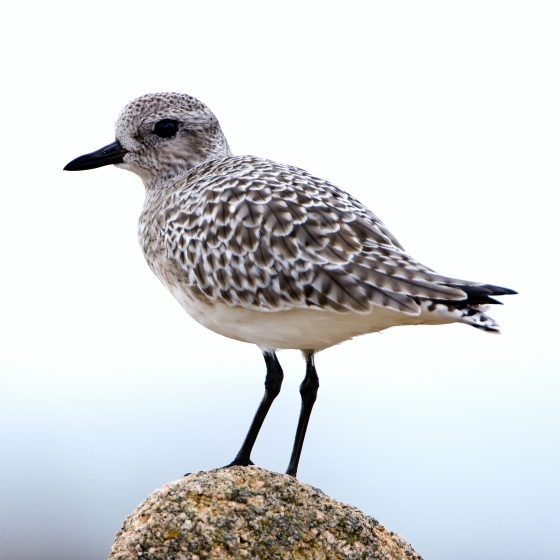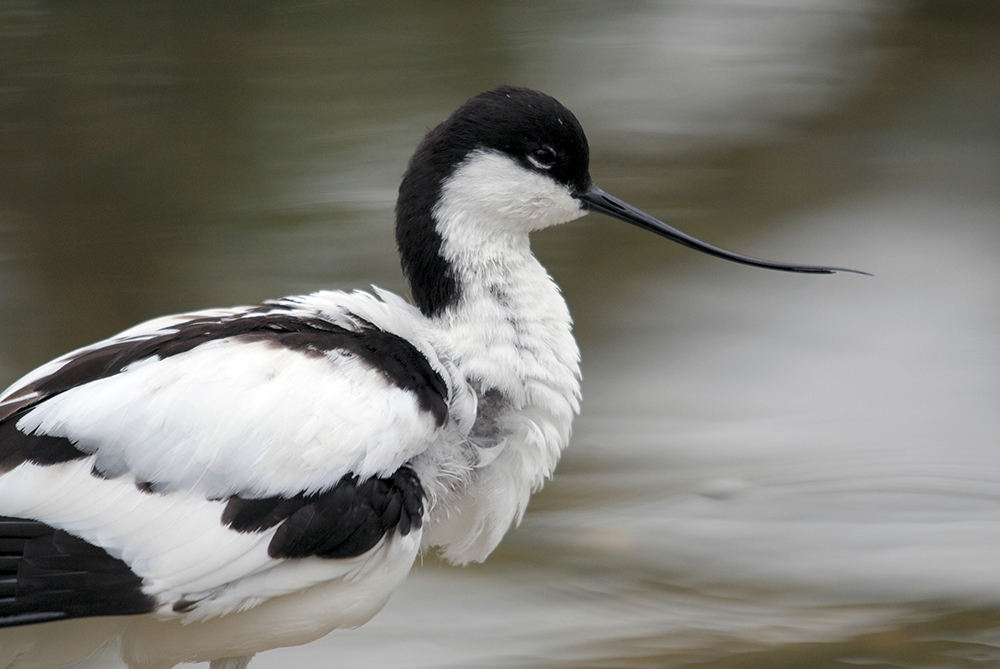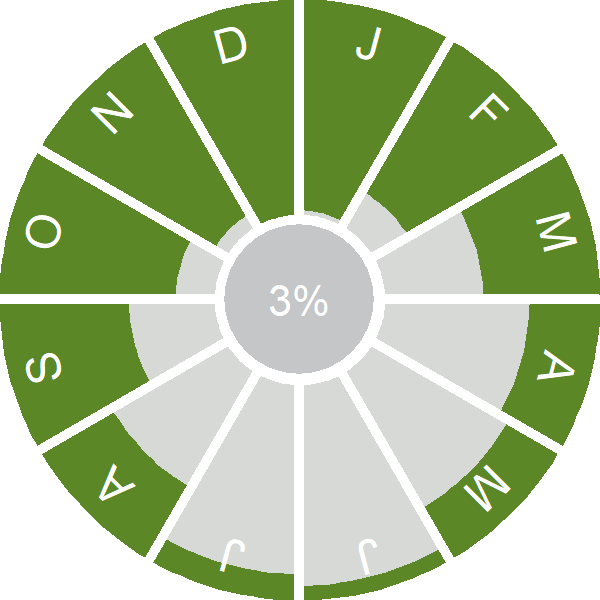Grey Plover

Introduction
Primarily a winter visitor to our coastal estuaries, its British name reflects its drab plumage at this time of year.
In summer, though, the Grey plover is more strikingly coloured and elsewhere it is known as the Black-bellied or Silver Plover. This was probably the last regularly occurring British species to have its breeding areas identified – not surprising given they are in the northernmost reaches of Siberia.
As with many Arctic-breeding waders, while some birds come to Britain for the winter, others continue their journey to spend the winter in western Africa. Unlike most birds, Grey Plovers often replace their primary feathers in two stages, moulting some before migrating and the remainder when they've completed their journey.

Key Stats
Identification
ID Videos
This section features BTO training videos headlining this species, or featuring it as a potential confusion species.
Grey & Golden Plovers
Songs and Calls
Call:
Alarm call:
Flight call:
Status and Trends
Conservation Status
Population Change
Grey Plovers are winter visitors to our shores and also pass through on migration. They are widely distributed around the UK, particularly in areas with intertidal mud and sandflats Balmer et al. 2013]. The UK has five sites that host internationally important numbers of Grey Plover each winter; The Wash, Ribble Estuary, Dengie Flats, Blackwater Estuary and Humber Estuary. [WeBS data show that there has been a decline in the number of Grey Plovers wintering here over the past 30 years, although numbers appear to have stabilised in more recent years.
Distribution
Grey Plovers are winter visitors and passage migrants to the UK and are widely distributed around the coasts, with a particular preference for areas with intertidal mud and sandflats. The breeding season map shows a scattering of spring and early autumn passage migrants and summering second calendar-year birds.
Occupied 10-km squares in UK
2007/08–10/11
or view it on Bird Atlas Mapstore.
2008–11
or view it on Bird Atlas Mapstore.
European Distribution Map
Distribution Change
There has been little change in winter range since the 1980s.
Change in occupied 10-km squares in the UK
from 1981–84 to 2007–11
or view it on Bird Atlas Mapstore.
Seasonality
Grey Plovers are mostly winter visitors but a few birds summer on larger estuaries, and return migration can begin in late July.
Weekly pattern of occurrence
The graph shows when the species is present in the UK, with taller bars indicating a higher likelihood of encountering the species in appropriate regions and habitats.

Movement
Britain & Ireland movement
Foreign locations of birds ringed or recovered in Britain & Ireland
Dots show the foreign destinations of birds ringed in Britain & Ireland, and the origins of birds ringed overseas that were subsequently recaptured, resighted or found dead in Britain & Ireland. Dot colours indicate the time of year that the species was present at the location.
- Winter (Nov-Feb)
- Spring (Mar-Apr)
- Summer (May-Jul)
- Autumn (Aug-Oct)

European movements
EuroBirdPortal uses birdwatcher's records, such as those logged in BirdTrack to map the flows of birds as they arrive and depart Europe. See maps for this species here.
The Eurasian-African Migration Atlas shows movements of individual birds ringed or recovered in Europe. See maps for this species here.
Biology
Productivity and Nesting
Nesting timing
Egg measurements
Clutch Size
Survival and Longevity
Survival is shown as the proportion of birds surviving from one year to the next and is derived from bird ringing data. It can also be used to estimate how long birds typically live.
View number ringed each year in the Online Ringing Report.
Lifespan
Survival of adults
Survival of juveniles
Biometrics
Wing length and body weights are from live birds (source).
Wing length
Body weight
Ring Size
Classification, names and codes
Classification and Codes
- Order: Charadriiformes
- Family: Charadriidae
- Scientific name: Pluvialis squatarola
- Authority: Linnaeus, 1758
- BTO 2-letter code: GV
- BTO 5-letter code: GREPL
- Euring code number: 4860
Alternate species names
- Catalan: pigre gris
- Czech: kulík bledý
- Danish: Strandhjejle
- Dutch: Zilverplevier
- Estonian: plüü
- Finnish: tundrakurmitsa
- French: Pluvier argenté
- Gaelic: Feadag-ghlas
- German: Kiebitzregenpfeifer
- Hungarian: ezüstlile
- Icelandic: Grálóa
- Irish: Feadóg Ghlas
- Italian: Pivieressa
- Latvian: juras kivite
- Lithuanian: jurinis sejikas
- Norwegian: Tundralo
- Polish: siewnica
- Portuguese: batuiruçu-de-axila-preta / tarambola-cinzenta
- Slovak: kulík bledý
- Slovenian: crna prosenka
- Spanish: Chorlito gris
- Swedish: kustpipare
- Welsh: Cwtiad Llwyd
- English folkname(s): Sea / Silver Plover
Research
Causes of Change and Solutions
Causes of change
Many species of wader, including Grey Plover, have shown a flyway-level decrease in numbers in recent years [Kleefstra et al. 2022] . The drivers of these declines are unclear, but various pressures have been suggested as possible causes, including the effects of fishing, disturbance by tourism, agricultural use and encroachment by buildings, as well as climate change [van Roomen et al. 2022]. It has also been hypothesised that some wader species, including Grey Plover, have shifted to more northerly non-breeding grounds in response to a warming winter climate in Europe making it more feasible for individuals to winter further north in areas such as the Wadden Sea, Scandinavia or Iceland [Maclean et al. 2008, Schekkerman et al. 2021].
Publications (1)
Consequences of population change for local abundance and site occupancy of wintering waterbirds
Author: Méndez, V., Gill, J.A., Alves, J.A., Burton, N.H.K. & Davies, R.G.
Published: 2017
Protected sites for birds are typically designated based on the site’s importance for the species that use it. For example, sites may be selected as Special Protection Areas (under the European Union Directive on the Conservation of Wild Birds) if they support more than 1% of a given national or international population of a species or an assemblage of over 20,000 waterbirds or seabirds. However, through the impacts of changing climates, habitat loss and invasive species, the way species use sites may change. As populations increase, abundance at existing sites may go up or new sites may be colonized. Similarly, as populations decrease, abundance at occupied sites may go down, or some sites may be abandoned. Determining how bird populations are spread across protected sites, and how changes in populations may affect this, is essential to making sure that they remain protected in the future. These findings come from a new study by Verónica Méndez and colleagues from the University of East Anglia working with BTO. Using Wetland Bird Survey (WeBS) data the study looked at changes in the population sizes and distributions of 19 waterbird species across Britain during a period of 26 years and their effect on local abundance and site occupancy. Some of these species saw steady increases in population size (up to 1,600%, Avocet), whereas other saw mild declines (-26%, Purple Sandpiper and Shelduck). The results showed that changes in total population size were predominantly reflected in changes in local abundance, rather than through the addition or loss of sites. This is possibly because waterbirds tend to be long-lived birds, with high site fidelity and new suitable sites may not always be available. Thus colonisation of new sites may typically occur when their existing sites approach their maximum capacity. As changes in populations are largely manifested by changes in local abundance – and as sites are often designated for many species – the numbers of sites qualifying for site designation are unlikely to be affected. Understanding the dynamic between population change and change in local abundance will be key to ensuring the efficiency of protected area management and ensuring that populations are adequately protected. Data from the Wetland Bird Survey and its predecessor schemes, which are celebrating 70 years of continuous monitoring of waterbirds this year, have been integral to both the designation of protected sites and monitoring of their condition. Continuation of this monitoring through future generations will ensure that the impacts to waterbird populations of future environmental changes may be understood.
20.09.17
Papers

More Evidence
More evidence from Conservation Evidence.com
Partners
Citing BirdFacts
If you wish to cite particular content in this page (e.g. a specific value) it is best to use the original sources as linked in the page. For a more general citation of the whole page please use: BTO (20XX) BirdFacts Species: profiles of birds occurring in the United Kingdom. BTO, Thetford (www.bto.org/birdfacts, accessed on xx/xx/xxxx).

